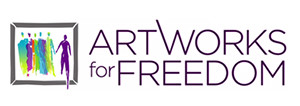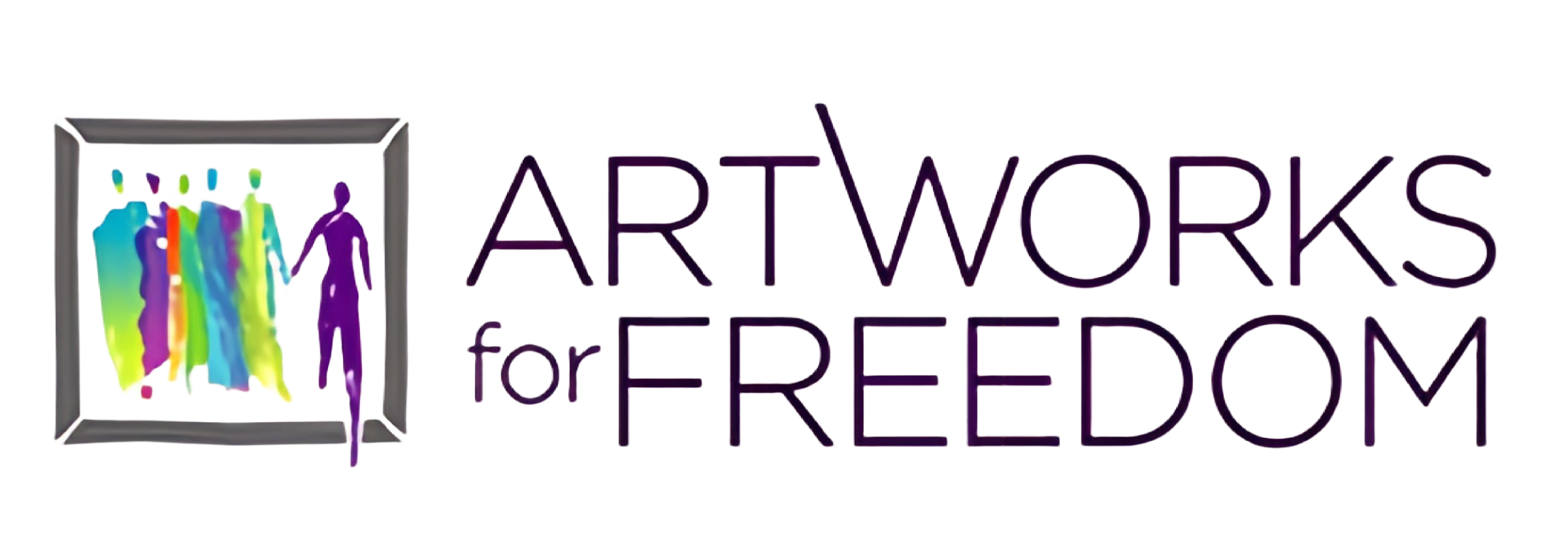
IN TRANSIT: THE BODY AS CURRENCY
IN TRANSIT: THE BODY AS CURRENCY
An exhibition of the Kay Chernush Virtual Gallery
Meet the Artists
Watch “Narratives of In Transit: The Body as Currency: A Dialogue with Curators & Artists” | Washington, DC | 28 November 2023
In this illuminating gallery talk, curators Helen C. Frederick and Kate Somers were joined by exhibiting artists Beautiful Feet, Matilde Simas, and Lynn Sures for a wide-ranging conversation about the making of the exhibition, the artistic process, and the role of the arts activism in the fight against human trafficking. The forum was moderated by art and photo historian Erin Haney.
Beautiful Feet
Beautiful Feet is a Native American and a survivor of human trafficking. Based in Colorado, she is the founder of Beautiful Feet Wellness, an organization that helps survivors find a healthy lifestyle through fitness, wellness, and spiritual growth.
“I really feel art reaches people on a deeper level than information alone. We consume so much information, but art engages our hearts and our minds and resonates with us long after we experience it. Art crosses language, time, comprehension, and a myriad of other barriers. It’s freeing — there’s no limit or constriction around how art might speak to us. It allows people to approach it wherever they are at, whether they’re coming in to just see something beautiful or they’re ready to be moved to action.”
Beautiful Feet
Alonzo Crawford

Alonzo Crawford is a retired professor from Howard University, where he taught filmmaking and cinematography in the MFA film program. He is a self-taught fine artist.
“The purpose of art is to change society for the better, not to maintain the status quo. The function of art is to move the viewer out of their comfort zone and into the possibilities of a better and more egalitarian worldview.”
Alonzo Crawford
Tim Davis

Tim Davis was born in Chicago, Illinois, and is recognized as an artist, curator, and educator. His narratives on social justice, activism, identity, and the Black experience have been exhibited throughout the United States and abroad.
“I chose to focus on the women and youth taken from Black communities, who are trafficked at the highest percentage of any race. It’s all a crime with any nationality and race; people are being sold all over the world as slaves — hopefully this exhibit and my work will sound the alarm.”
Tim Davis
Oletha DeVane
Oletha DeVane is a multidisciplinary artist who explores diverse political and social identities and cultural interpretations. Her work is included in permanent museum collections and has been featured in exhibitions throughout the Mid-Atlantic. The recipient of numerous grants and awards, she is the 2023 Baker Artist Awardee in interdisciplinary arts.
“I believe the role of the artist is to reflect the world in which we live, and that art can be used at times to enlighten society on issues of social justice. Our daily lives are steeped in racial conflict and sexism — subjects addressed not only in the media but also by artists whose work has a critical role in defining the current culture.”
Oletha DeVane
Judith Goodman
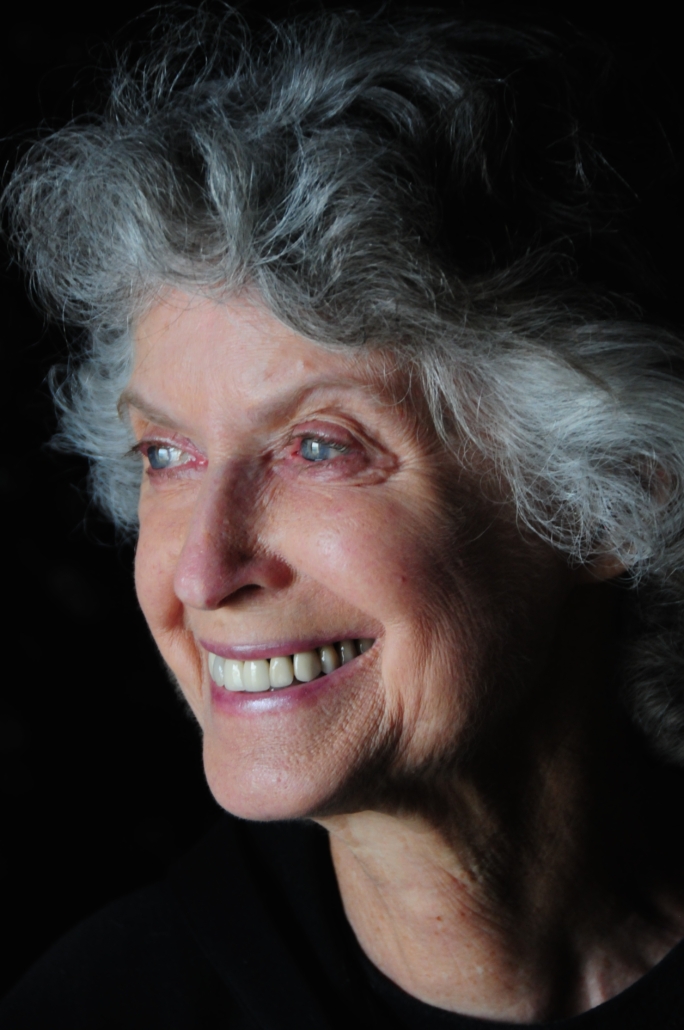
Judith Goodman is a Washington, DC–based sculptor and fine art photographer whose work has been shown at the Corcoran Gallery of Art, the Baltimore Museum of Art, the Tisch Gallery at New York University, the Soho Photo Gallery, and many other galleries.
“As a friend and colleague of the late Kay Chernush, I have always been impressed by her dedication to the cause of human rights, especially as it pertains to human trafficking. It is an honor to show my work in her memory.”
Judith Goodman
Mary Oestereicher Hamill
Mary Hamill has created socially engaged artwork over the past three decades with marginalized populations including homeless people in Boston, Cambodian war widows, rural Vietnamese villagers, and Chinese elders. Her projects proceed from her award-winning career in higher education reform. Hamill is formerly the director of the Bernstein Gallery at Princeton University.
“Life’s deepest significance comes from cultivating the capacity to care. I want my art to awaken sympathetic concern and help move people to action.”
Mary Oestereicher Hamill
Daniel Heyman

Daniel Heyman’s work has focused on survivors of military sexual assault, the routine abuse of civilian human rights described as “collateral damage,” and the torture of innocent Iraqis at Abu Ghraib. The recipient of fellowships from the Guggenheim Foundation and the Pew Center, he formerly led the printmaking department at Rhode Island School of Design.
“Like children everywhere, American children are brought up with the stories their teachers can bear to tell — and who can bear to relate stories of abuse while looking into the eyes of children, when they have the option of telling of a nation that tirelessly promotes life, liberty, and the pursuit of happiness for all? We smile blithely when our governments hide behind smokescreens and abuse power in our name. An artist, however, finds beauty attached to truth, as beauty without truth rings hollow. My work is not inspired by human rights abuses — it is inspired by a desire that we live up to our ideals.”
Daniel Heyman
Christopher Kojzar
Christopher Kojzar is a Harris Fellow in the art and art history program at the University of Vermont. He has received residencies from La Napoule Art Foundation, Creative Alliance, Crosstown Arts, and the Santa Fe Art Institute.
“The arts function as a personal response to lived experience. Although I’ve never been directly affected by human trafficking, I think there is a precarious mode of survival to living in the United States for us all. With [my featured piece] the corner, however, I mean to show that people need refuge in this country for reasons that I as a citizen might never understand from my own position of privilege.”
Christopher Kojzar
Choichun Leung
Choichun Leung is a self-taught painter and the founder of the nonprofit The Young Girl Project, a narrative-based, multidisciplinary art project dedicated to bringing awareness and intervention to child sexual abuse. She was raised in Wales, United Kingdom, and is now based in Brooklyn, New York.
“Visual art communicates more than words as it transcends the limitations of our many spoken languages — it can create an immediate visceral response and inspire change, and it can make difficult subject matter easier to digest.
“Human trafficking is increasing, fueled by war and conflict, climate change, and economic disparity. These problems are intertwined. Prevention is important, and this exhibit raises awareness and visibility of the issue and reminds us not to forget the human being in this crisis.”
Choichun Leung
Rick Nahmias
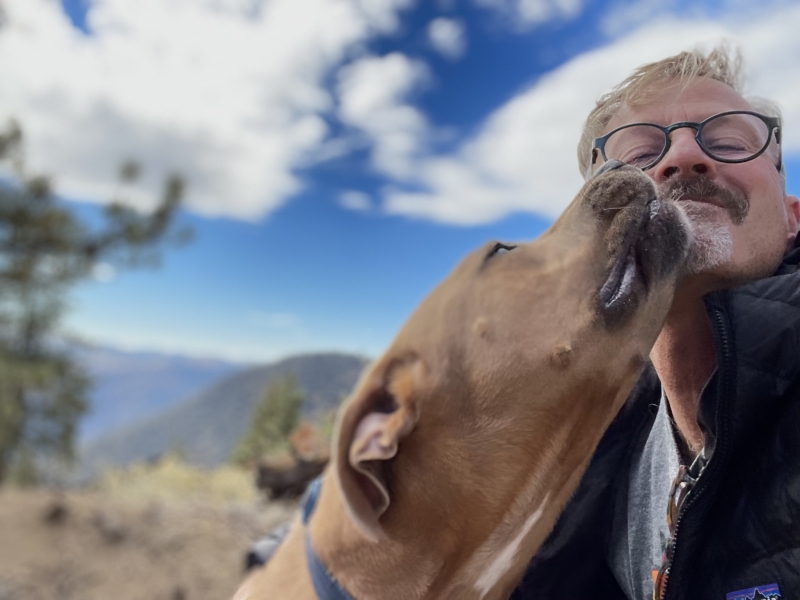
Rick Nahmias is the creator of large-scale traveling photodocumentary exhibitions and their award-winning companion books, including The Migrant Project: Contemporary California Farm Workers and Golden States of Grace: Prayers of the Disinherited.
“I have been forever moved by the connection between artist and subject when it comes to the topic of the ‘outsider.’ There is something so inspiring yet unassuming in these people, their faces, their stories, which relay strife and suffering but also conviction, resilience, determination. Even decades after some of these images have been made, I remain incredibly grateful to these people for allowing me into their lives.”
Rick Nahmias
Jenkins Okpokpor
Jenkins Okpokpor is a Nigerian artist. Primarily a painter, he holds a BA in fine and applied arts from the University of Benin, Nigeria.
“Art is a universal language that binds people together while highlighting environmental challenges and their connections to other social problems that have a global impact. I believe that steadily, the world can be changed through artists because art is a powerful instrument for sharing ideas, opening minds, and inspiring empathy.”
Jenkins Okpokpor
Jaz Palmer
Jaz Palmer began drawing in 2020 when the world went on pandemic lockdown. Her highly emotional, personal work encompasses a variety of mediums, primarily painting and digital collage.
“I am passionate about ending sexual violence against women and children because I’ve lived it. As I’ve begun to speak out, it’s astounding how many people share that they have a similar experience. Sexual abuse is unfortunately very common, and until a light is shed on the topic, it will continue to grow in darkness.”
Jaz Palmer
Tara Sabharwal
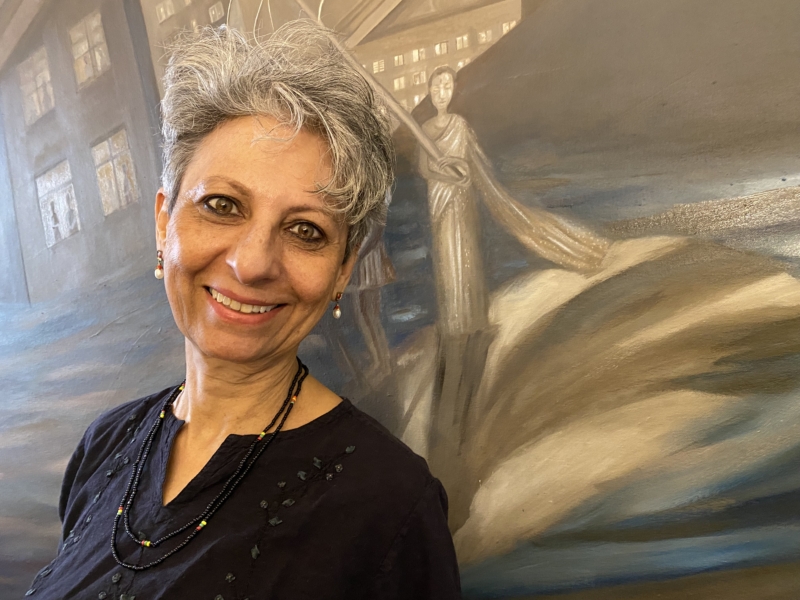
In an award-winning career spanning more than four decades, Tara Sabharwal has had 45 solo shows in India, Japan, Germany, the United Kingdom, and the United States. She has taught at the Guggenheim Museum, the Rubin Museum of Art, Cooper Union, and the City College of New York.
“Art has a unique role to play in activism. It can speak to hearts that are closed and inspire empathy with the ‘other’ and with the oppressed, which is essential to make any change in the world. Human beings are capable of great intelligence but this too can be used to justify their selfish needs. Art opens up possibilities for introspection and can allow one to step out of one’s separate self to become part of a larger universal consciousness.”
Tara Sabharwal
Jordan Seaberry
Jordan Seaberry is a painter, organizer, legislative advocate, and educator. Alongside his art, he built a career as a grassroots organizer and as director of public policy at the Nonviolence Institute, helping to pass multiple criminal justice reform milestones. Seaberry serves as co-director of the U.S. Department of Arts and Culture and faculty at Rhode Island School of Design.
“Imagination is the bedrock of social change. When I use that term, I do not mean it loosely — I mean change in the concrete, material, lived conditions for marginalized communities. The biggest challenge to achieving a new world is to even imagine that another one is possible. It is sadly ironic that those with the greatest capacity for this imagination are often those who have been most harmed by the system, and are farthest from the levers of change. The system changes only as culture changes, after minds are moved. As an artist, educator, organizer and legislative advocate, I believe deeply in the connection between political organizing and creative practices.”
Jordan Seaberry
Matilde Simas
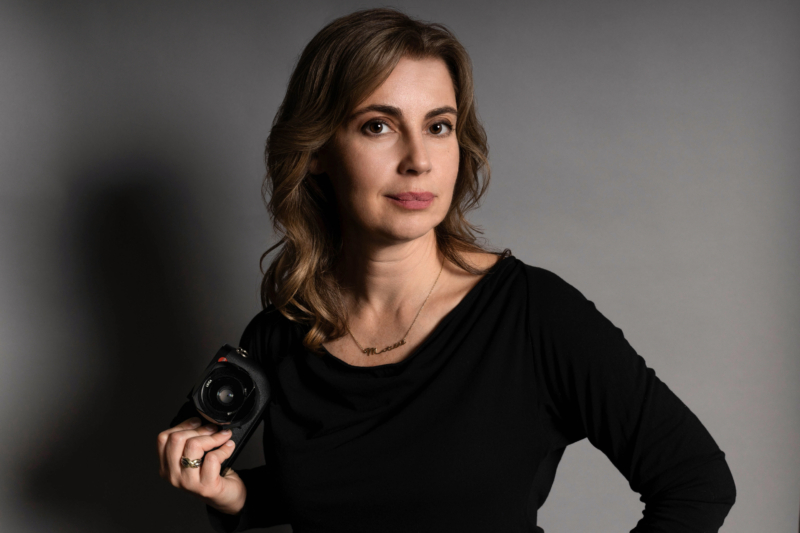
Matilde Simas is an award-winning documentary photographer who has traveled extensively to bring a deeply humanistic viewpoint to difficult subjects like sex trafficking and forced marriage. Her global work as a photographer is guided by a humanitarian perspective and includes a long-term documentary project on human trafficking and advocacy for specialized services for exited survivors to live sustainable lives. Her photography has been showcased internationally and widely exhibited by various United Nations agencies.
“Photography that documents human trafficking puts a human face on the problem and can influence people in a way that numbers or academic discussion does not. Although photographing human trafficking can be an upsetting experience, bearing witness to the enduring power of the human spirit has provided me with motivation. I want more people to understand the plight of those who have been or are being trafficked, and I want to help survivors heal.
“When I began my long-term project on human trafficking, I reached out to ArtWorks for Freedom founder Kay Chernush. She advised, ‘Don’t wait for an assignment. If you really want to make a difference, go out and shoot it and share it’ — advice I still carry with me many years later.”
Matilde Simas
Lynn Sures

Lynn Sures is a research associate in drawing in the Human Origins Program at the Smithsonian Natural History Museum, a recipient of a Smithsonian Artist Research Fellowship, and founding director of the Collegiate Paper Triennial and the Fabriano Paper/Print/Book workshops.
“While my artistic practice is devoted to interpreting the study of human origins and ecology, occasionally I work tangentially to that primary focus because a compelling aspect of contemporary society calls me strongly to add my voice. This is the case with the piece We Speak of Slavery in the Past Tense.
“Human trafficking has been more and more persistently in my thoughts, as it becomes increasingly present in our sociopolitical discourse. This exhibition creates a space where an artist can play a part in calling attention to the issue and weakening its powerful hold by helping to expose it.”
Lynn Sures
Worldwide Documentaries Inc.
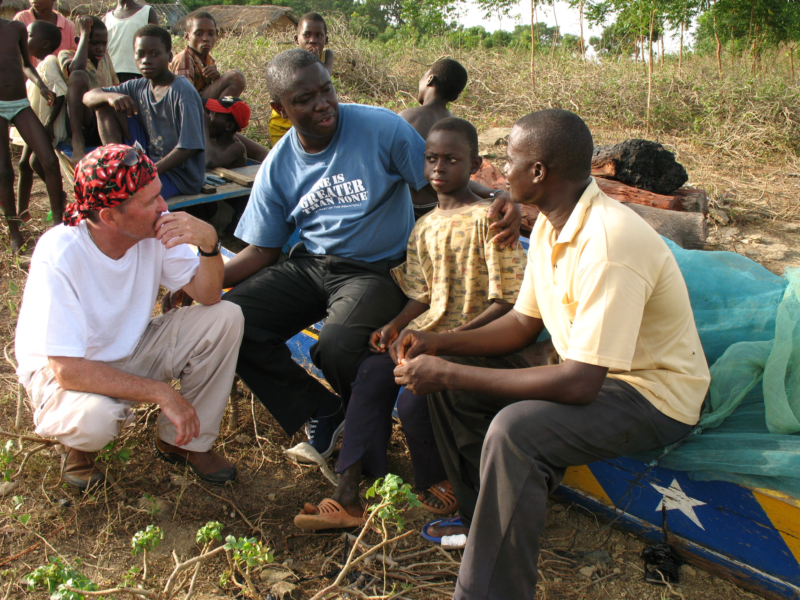
Founded in 1985 by Robert Bilheimer and Heidi Ostertag, Worldwide Documentaries is an award-winning, nonprofit film production company focusing on subjects of social, cultural, and humanitarian concern. Worldwide Documentaries has been recognized by the Academy of Motion Picture Arts and Sciences and the Mother Teresa Memorial Award for Social Justice.
“If a story remains untold, the subject(s) of that story might as well not exist. For over thirty years of making documentaries, we have witnessed firsthand how films such as Not My Life can be effective and sustainable agents for social change.”
Heidi Ostertag
Helen Zughaib
Helen Zughaib is an artist from Beirut, Lebanon, whose paintings are included in institutional collections and have been featured in exhibitions around the world. The recipient of multiple fellowships from the DC Commission on the Arts and Humanities, Zughaib was selected by the Kennedy Center/REACH for a 2021–23 Social Practice Residency.
“By participating in this exhibition, I wanted to bring attention to what happens to the young children and women caught in a war, living in camps that are unsafe and violent and where their rights are repeatedly violated, including through forced marriage and labor, the denial of schooling, and sex trafficking of mostly girls and women.”
Helen Zughaib
